Sustainability
6 Green Roof Benefits That Increase the Quality of Any City
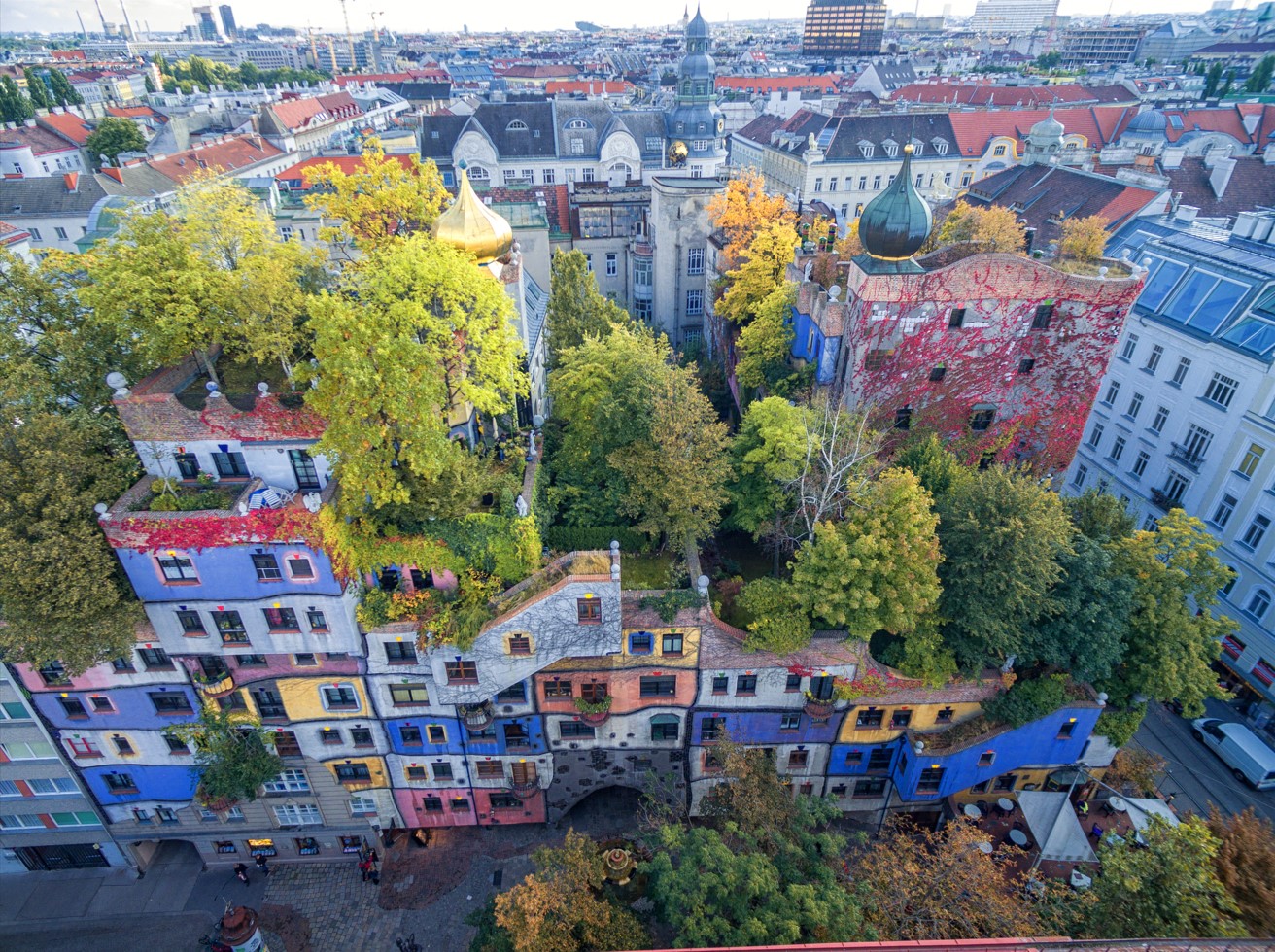
Benefits of Green Roofs
The city of Vienna has been rated the number one place to live in the world 8 times in the last 10 years. Vienna has been at the forefront of exploring green roof benefits and is currently experimenting with some of the most promising ways to implement these systems. The benefits of green roofs that they have experienced firsthand could mean that we see more green buildings, green walls, and even green homes in the future.
Green roofs in densely populated urban areas have been shown to cool entire cities, cut the cost of energy bills, and even enhance the effectiveness of solar panels.
What is a Green Roof?
Green roof systems are designed to transform the otherwise empty space on the top of a building into a form of natural infrastructure capable of benefiting the population in a myriad of ways. Think of it as a park on a rooftop.
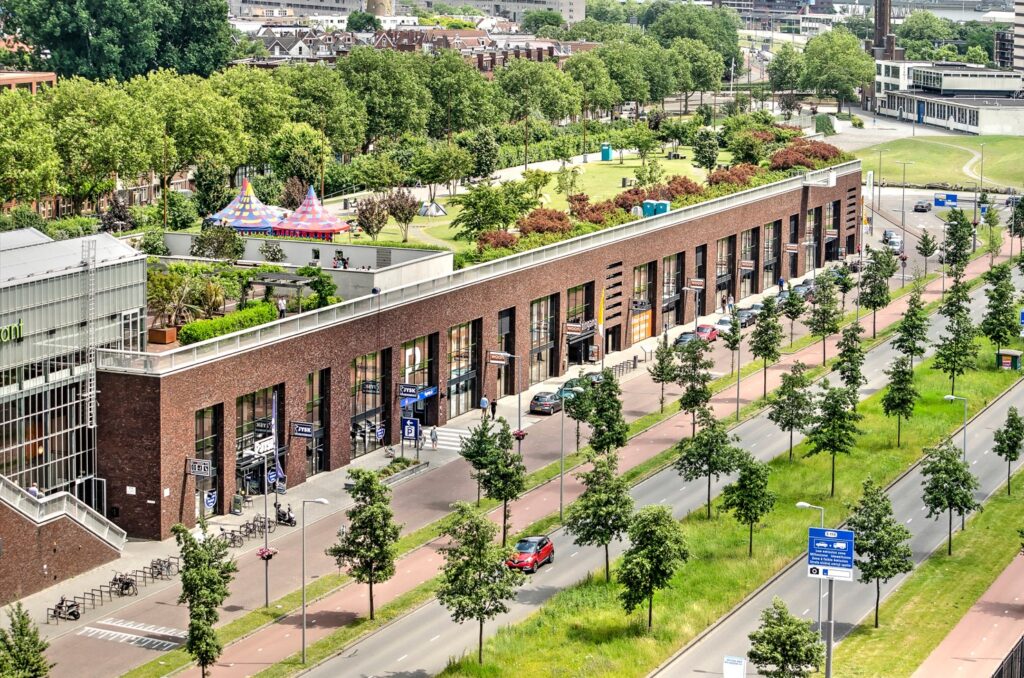
Green roofs—or eco roofing— have conventionally been used to complement the installation of solar panels, but by allowing both plants and panels to exist in a symbiotic relationship for homes and buildings, they may also increase our well-being by transforming spaces into a sort of sanctuary.
Here are 6 benefits of green roofs that can instantly increase the quality of life in nearly every city that everyone, even homeowners, should know about.
Green Roof Benefits: They Reduce the Cost of Energy
A plant’s adiabatic capabilities mean that it has the power to both cool the area around it and retain excess heat. This allows eco roofing to cut the costs of both air conditioning and heating systems. Additionally, this lessens the overall demand for energy and therefore lowers greenhouse gas emissions.
Green roof systems also retain and store rainwater, saving costs for facilities. This both lowers the strain on our stormwater systems and acts as a natural collection area for useful greywater. Greywater is water not suitable for drinking, but that can be repurposed for vital utilities like plumbing.
Eco Roofing Effectively Battles Climate Change
Green roof benefits don’t just include saving money, they are an excellent tool against climate change. Every plant added to our planet increases its ability to absorb harmful greenhouse gases released by the burning of fossil fuels.
Scientists are currently working hard to find ways that allow natural organisms like fungi to absorb more carbon in our atmosphere than they already do. But aside from absorbing carbon, certain plants and shrubs can also cool the Earth by reflecting sunlight back into space—what is known as the albedo effect. The more sunlight that is reflected away from the earth, the less heat is stored on the planet in the form of solar energy.
Plants and shrubs with a high albedo effect that are chosen for the area add to the benefits of green roofs.
Vienna is Cooling their City With Green Roof Systems
In a 2023 survey, Vienna was once again ranked to be the best place in the world to live. For over a decade now, the city has experienced green roof benefits firsthand. The Energy Planning Commission of Vienna has been experimenting with two types of green roofs: a shallow, more extensive version and a deeper, more intensive one.
Types of Green Roofs
Extensive Green Roofs: The extensive green roof model is 8 cm thick and is well-suited for growing succulents, mosses, herbs, and grasses. The simplicity of their vegetation makes them easier to maintain than their intensive counterpart, and they can cover a lot more space on a rooftop.
Intensive Green Roofs: Intensive green roofs are 20 cm thick. They can accommodate a larger variety of different-sized plants including small trees. These systems require more care and water, but they also have the potential to better benefit the surrounding area.
Eco Roofs Enhance the Effectiveness of Solar Panels
The plants used for eco-roofs have the ability to cool the ambient air around them and have been shown to increase the performance of solar panels by as much as 20%. The more stable climate created by the plants increases the power output of solar panels. Vegetation layers also act as natural anchors for the panels, making them easier to install.
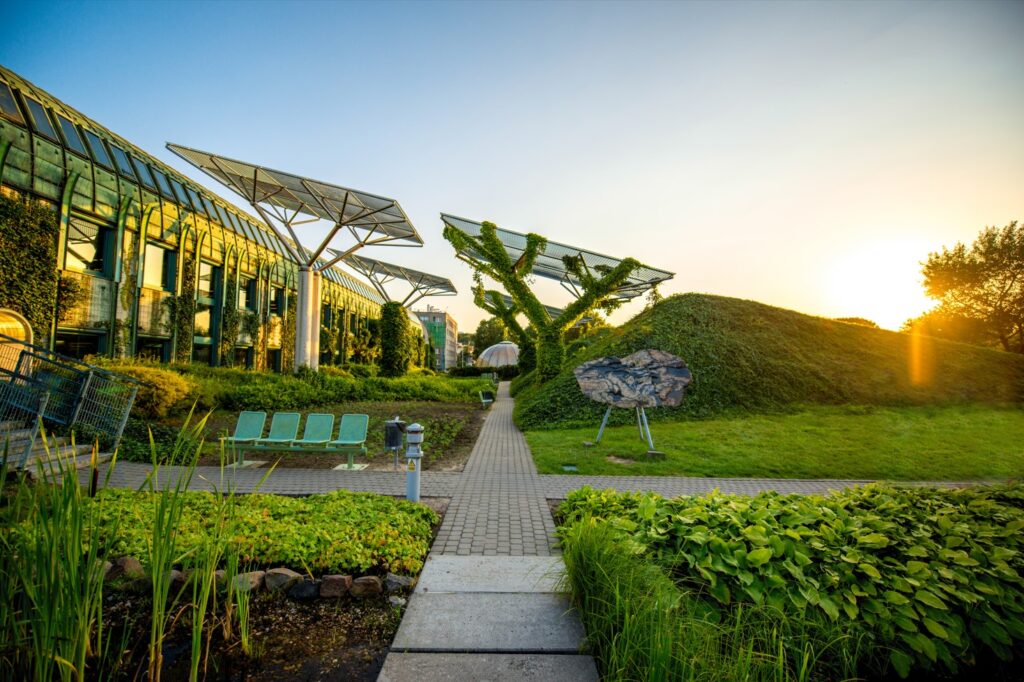
They Greatly increase Biodiversity
Eco roofs are one of the best solutions for rebuilding the ecosystems lost to urbanization.
With enough care and planning, the natural spaces created by green roofs can greatly increase the biodiversity of places where it has been decreased or removed altogether. These spaces can be designed to accommodate a variety of plants home to many diverse species of animals and insects.
Solar panels can also add to the benefits of green roofs regarding their biodiversity. The shade generated by the panels results in longer water retention for the plants which helps them grow. If the plants used for the green roof naturally thrive in shade, it further contributes to the biodiversity of the roof.
The added diversity of plants can even make a home for threatened species of birds, bees, and other animals.
They Greatly Enhance Our Health and Wellness
Plants are amazing to have in any city because they act as purifiers by filtering particles out of the air and can even reduce noise pollution when grown in sufficient quantities. If you have ever been in a building that has an indoor sanctuary of plants and trees, you will know exactly what this feels like.
The air is cleaner to breathe; sounds are sharper and more refined as they travel through airways.
Something as simple as the natural beauty of these spaces has an immense impact on mood and by extension productivity. An office building with a green roof will produce happier and healthier workers.
This benefit of green roofs also extends to include green walls.
What Is a Green Wall?
Green walls are essentially the same as green roofs, but instead of being created on a rooftop, they are integrated with the façade of a building. More space for vegetation means more benefits to the surrounding city.
The 3 Types of Green Walls
There are 3 types of green walls:
Ground-bound: These are by far the most cost-effective. Climbing plants that cling to buildings and support structures like trestles are planted around the base of a building. Enough ground is needed next to the wall of a building for this system to work.
Containers: When ground space for climbing plants is not available, planting containers can be placed around the base of a building to achieve the same effect as a ground-bound system.
Wall-bound: The entire side of a building can be made green with vegetation when the right irrigation and nutrient-supply systems are installed. Like intensive green roofs, the wall-bound model accommodates a larger variety of plants like flowers and shrubs but also requires more maintenance and infrastructure in the form of suspended planters.
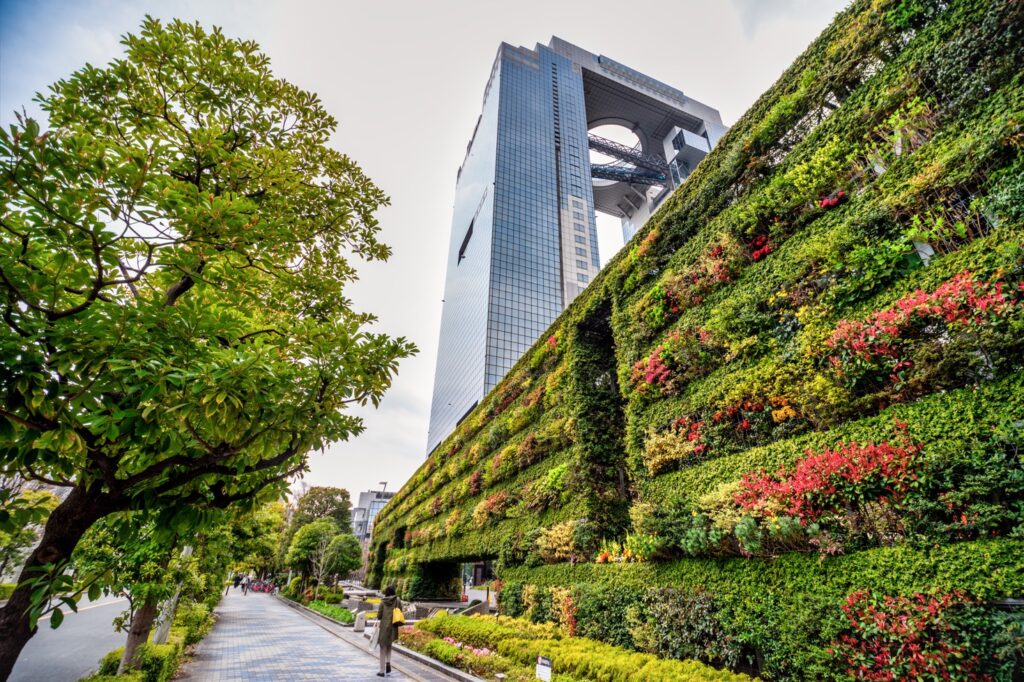
They Pave the Way for More Solutions to Big-City Problems
Eco roofs with solar panels that have been designed with enough space for people to gather can turn any barren building into a lively oasis; thereby creating a higher-quality cityscape. The congestion problem many cities have due to a dense population may provide the perfect opportunity to lower greenhouse gases if more space is used to grow plants, shrubs, and trees.
The symbiotic relationship between vegetation and solar technology suggests there may be no need in the future to differentiate between natural and artificial infrastructure. Organizations like the David Suzuki Foundation have shown that municipalities can benefit financially by building natural infrastructures such as forests and wetlands. There is every reason to think that cities themselves will become more profitable by incorporating more natural infrastructures into them.
The cities of the future may do more than just enjoy these green roof benefits. They may also be able to profit from them for generations to come.
Sustainability
Top 5 Genius Plastic Alternatives to Help Save the Planet
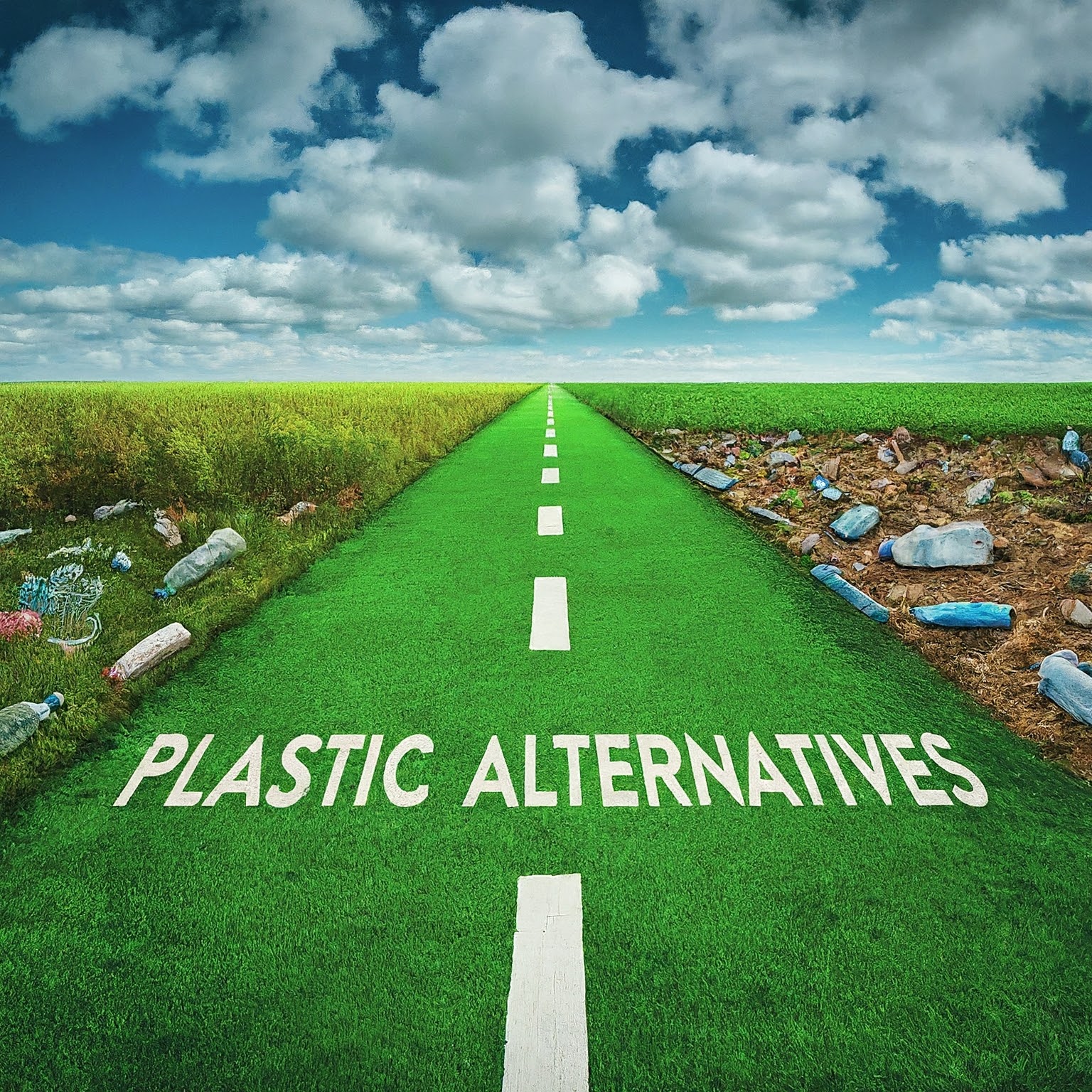
Table of Contents
Plastic Alternatives
Scientists around the world are developing innovative and exciting new alternatives to plastic. There are now ways that we can wrap, carry, and preserve our products just as we always have, but without damaging the Earth.
Nearly 400 million tonnes of plastic waste gets into air, water and soil every year.
The TeamSeas Robot works at cleaning up this plastic pollution in the ocean , and plastic-eating bacteria is being developed to clean plastic waste up on land. But the fact is that these solutions don’t target the source. They can only be so effective if plastic keeps being thrown into the environment.
In comes plastic alternatives.
What Are Plastic Alternatives?
Plastic alternatives are materials that replace traditional plastics. There are dozens of plastic alternatives, and they can all be categorized in two ways: traditional plastic alternatives and innovative plastic alternatives.
Traditional plastic alternatives have been used for centuries and became ubiquitous with plastic use; whereas innovative plastic alternatives are new and compete with plastic as a more sustainable alternative.
| Category | Materials | Goal | Stage |
|---|---|---|---|
| Traditional Plastic Alternatives | Glass, paper, bamboo, cotton, wood | Used alongside plastic because of availability | Used for centuries and have well established production methods |
| Innovative Plastic Alternatives | PHA, mushrooms, seaweed | Used as an alternative to plastic for sustainability | New and expensive production means |
Here are the top 5 genius plastic alternatives that—while new and expensive—can help save the planet by reducing plastic pollution.
Zerocircle: Plastic Alternatives from Seaweed
Seaweed has been protecting the ocean since long before human beings have been wandering the world. It only seems logical to let it keep doing that. That’s what entrepreneur Neha Jain figured when she founded Zerocircle in 2020.
Seaweed is an easily renewable resource available in most of the oceans of the world. They provide as much as 50% of the oxygen in the atmosphere and play a vital role in the health of our planet.
Zerocircle uses these plants to develop and distribute an exciting seaweed-based plastic alternative. It quickly dissolves back into water and soil, leaving no harmful chemicals behind.
WasteBased: Plastic Alternatives from Hydropol
Easily one of the biggest challenges in the battle against plastic pollution is the everyday plastic shopping bag. Wastebased, a UK-based startup has introduced an answer to that problem.
Item Bag 2.0 “… is no ordinary bag,” says their website. “It will dissolve in fresh or saltwater and leave no microplastics behind. It’s also biodegradable, non-toxic, and carbon negative.” It also dissolves in boiled water leaving no harmful chemicals behind.
Rather than the usual chemicals and polymers that traditional shopping bags are made of—like forever chemicals—Item Bag 2.0 is made from Hydropol. This biodegradable bioplastic is similar to the material used to coat dishwasher or laundry pods. Presently, it’s being manufactured from fossil fuels, but they can also be made from renewable resources such as sugar cane. Wastebased is currently working toward making the switch.
Plastic Alternatives from Potatoes
Another great idea is coming from a man at Lund University in Sweden. It’s a plastic alternative made of just potato starch and water. The potato plastic decomposes within only two months of landing in the environment. That’s a huge improvement over the 500 years it takes traditional plastics to break down.
Pontus Tornqvist, the developer of the material, took it one step further. The plastic not only breaks down quickly, but because it’s made of potato material, it actually nourishes the soil it lands in. As Pontus puts it, it’s just better to use the waste we’re already creating than to make new waste.
Ecovative: Plastic Alternatives from Mushrooms
Ecovative is a company that specializes in making packaging out of mushroom material which they grow in their own facility. They create a packaging solution with the natural binding properties of the roots of mushrooms. The solution, known as Mushroom Packaging, can be added to the compost heap to biodegrade safely and quickly into the Earth. More than that, the fungus content of the material will nourish the soil around it.
Paptic: Plastic Alternatives from Wood Fibres
Finland has another good idea about innovative plastic alternatives. Paptic is a growing company that uses a plastic, paper, and canvas alternative made from wood fibers.
They use only forests that produce more trees than they need and with careful attention to biodiversity and the natural world. The resulting product is reusable, recyclable, and biodegradable. It’s already been commercially available for several years.
Wood fiber plastic is used to make a wide variety of sturdy products including bags, food packaging, and mailers. This plastic alternative is likely to be stronger than that of plant-based alternatives.
Are Plastic Alternatives Better for the Environment?
Traditional plastic alternatives like paper, wood, and glass are heavier than plastic and release more greenhouse emissions during production. This increase in GHG emissions make traditional plastic alternatives worse for the environment than plastic. However, some innovative plastic alternatives like seaweed have natural elements that break down in the environment over time. This makes bioplastic alternatives better for the environment because it reduces plastic pollution.
The only problem is that bioplastics remain expensive to produce. This makes it difficult to gather the data needed to understand how much GHG they emit during production, and whether it is less than plastic alternatives.
Why Are Bioplastic Alternatives Expensive?
Many bioplastic alternatives are plant-based. They are made from materials that don’t just require processing like traditional plastic, but that also require growing and harvesting. Moreover, they are not widely available, and their scarcity in comparison to plastic further raises their price. All of these factors— including that they are also new—make bioplastic alternatives expensive.
Bioplastic Alternatives Are Increasing
Research and development is the key to making Bioplastics widely used. If renewable energy has taught us anything, its that things become less expensive as we continue to use them because we get better at producing them. While bioplastic make up less than 1% of the plastic currently used, its production and refinement is increasing every year.
The global production capacity of bioplastics increased to 2.6 Billion metric tons in 2024, a 22% increase from 2023. This number is expected to quadruple in 2025. If this happens, it will be the biggest yearly increase in bioplastic production ever.
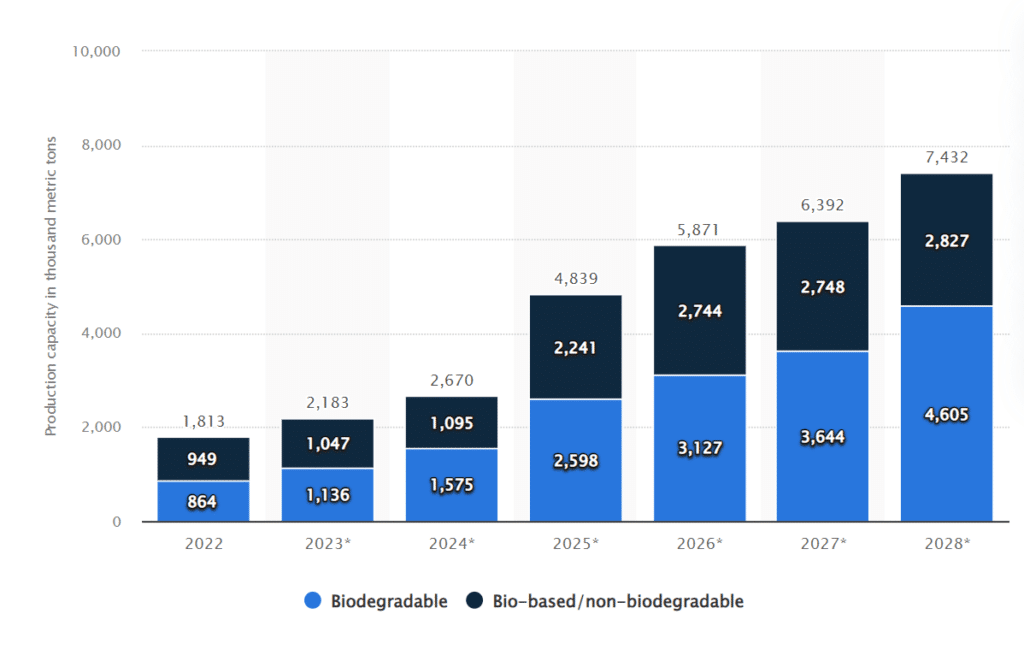
Drawbacks of Plastic Alternatives
There are some challenges for adopting many of these alternatives to plastics.
- GHG Emission: Plant-based plastic alternatives require growing and harvesting in addition to manufacturing. These added layers to the production process may increase GHG emissions.
- Inefficient Production: Many innovative plastic alternatives, like seaweed, require manual processing. This takes up a lot of time and adds to the cost.
- Pesticides: Plastic alternatives made from plant materials carry with them the risk of pesticide contamination. This is something that could be remedied using AI agricultural robots in the future.
- Methane: Bio-based plastics alternatives are not entirely biodegradable. They are only partly made from bio-materials. When these alternatives get thrown in landfills, they can produce methane which will aggravate the global warming problem. However, this is also true of traditional plastic.
- Higher Cost: Some bioplastics cost 20% to 50% more to produce than traditional plastics making them financially unsustainable.
There is no perfect solution to plastic pollution, but the development of all these possible plastic alternatives is inspirational and brings with it some amazing innovations for the future. It’s only a matter of time before we find the best solutions to plastic pollution.

IC Inspiration
Of course, the best way to make the plastics pollution problem a thing of the past would be to just not have any more plastic at all. However, that’s not ideal and probably wont ever happen.
Plastic is everywhere. We use it daily whether we realize it or not, and whether we want to or not. It’s not just in the obvious places like shopping bags and straws, but It’s also in places most folks wouldn’t even think of, like tea bags, toothpaste, and shampoo. It’s tempting to wonder whether it’s actually possible to eliminate plastics in our lives at all.
People like Erin Rhoads says yes, it is. Better than that, though, she’s proven it by actually going plastic-free for the last two years.
She documents her journey to a plastic-free existence on her blog Rogue Ginger. She also offers tips for reducing plastic use in everyday life and reviews of low-waste products. She even provides guidance for things many people would never think of, like how to have a sustainable Christmas or wedding ceremony.
There is no perfect solution to plastic pollution (and that could even be a song). But Erin is all about documenting her life’s journey on a plastic-free road!
Sustainability
Seaweed Plastic: An Emerging Solution to Plastic Pollution
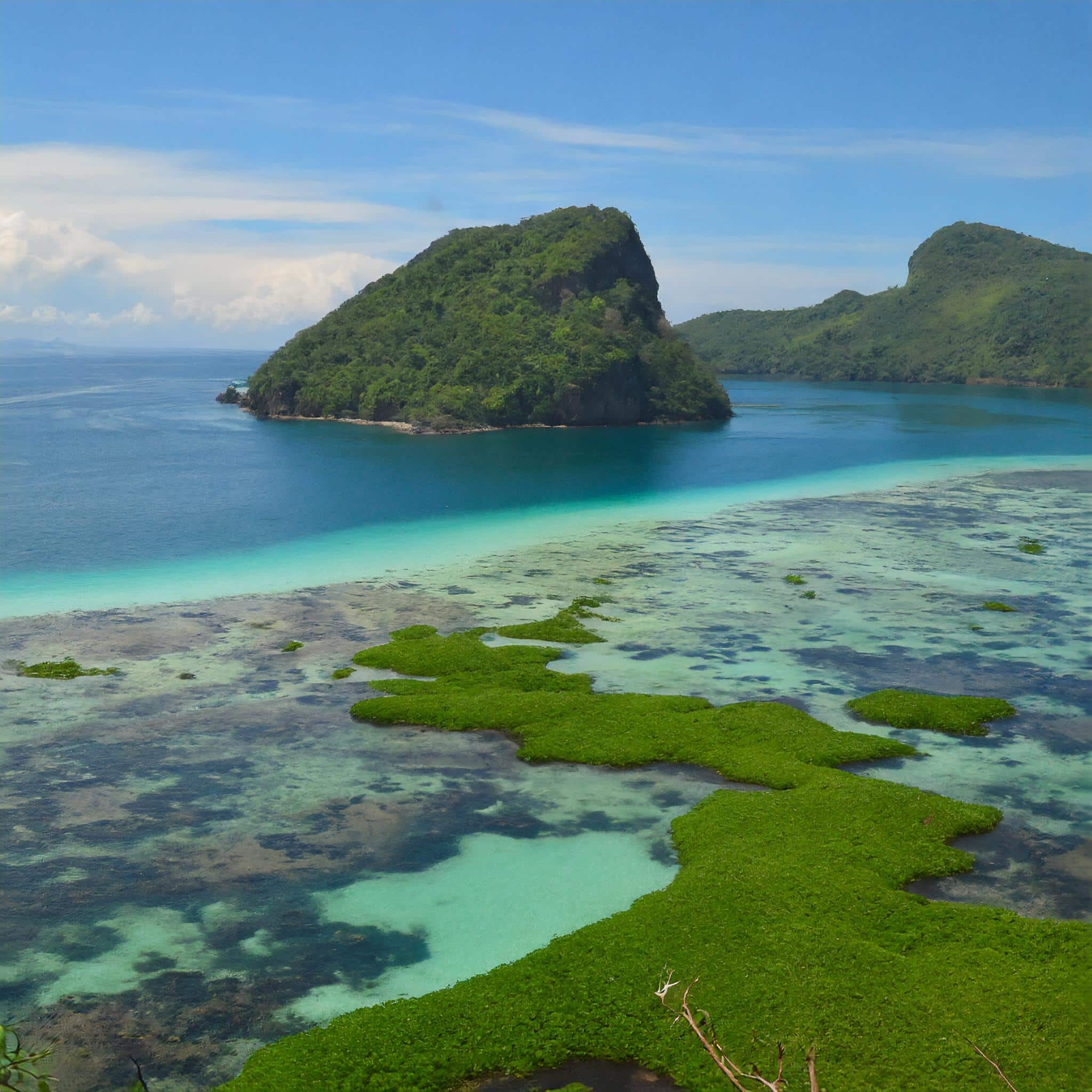
Table of Contents
Seaweed Plastic
Every minute, two garbage truck’s worth of plastic enters our oceans.
And every other minute, thousands of people across the world dedicate themselves to creating low-cost, biodegradable plastic alternatives that dissolve as soon as it enters the ocean.
This spells good news for the future of our human underwater habitats.
What is Seaweed Plastic?
Seaweed plastic are plastic alternatives that are made from seaweed, and that are bio-degradable. This means that when any of these “plastics” reach the ocean, it will dissolve as soon it touches the water. Moreover, seaweed is also edible, making seaweed plastics less likely to end up in oceans because there is an option that it might end up in the stomach of users.
Who Invented Seaweed Plastic?
The Idea of a seaweed plastic alternative was developed by engineering college students Rodrigo García González, Pierre-Yves Paslier and Guillaume Couche. They were the first to invent the “edible water bottle”, a sachet made from seaweed which contains water, and which was sold by the startup Ooho. in 2019, Ooho rebranded to the name Notpa, and has since included food packaging, rigid cutlery and containers among their bioplastic products.
What are the Disadvantages of Seaweed Plastic?
- High Cost: Production costs are high for seaweed plastics, making their demand low and their production limited.
- Less durable: Seaweed plastic alternatives are biodegradable, but they have weak mechanical properties compared to traditional plastics. This makes them less durable, and more prone to tearing.
- Limited Applications: Seaweed plastics currently have a very limited use and are often restricted to gift and food wraps, tea bags, and sachets; whereas, conventional plastics can be used for almost everything.
What are the Advantages of Seaweed Plastic?
Less than 10% of plastics actually end up being recycled. This makes seaweed plastic alternatives much more practical as a solution to plastic pollution than recycling. The advantages of seaweed plastic alternatives include the following:
- Biodegradable: Traditional plastics can take centuries to decompose; however, plastics made from seaweed dissolve as soon as it reaches the ocean.
- Edible: Bioplastics made from seaweed don’t need to reach the ocean in the first place because they can be eaten. Imagine receiving a gift-wrapped present in the near future and knowing that if you wanted to, you can have your gift and eat it too.
- Carbon Capture: Seaweed cultivation absorbs carbon dioxide from the atmosphere, helping mitigate the affects of climate change and create a clean energy future.
- Healthier Oceans: It is estimated that algae produce up to 70% of Earth’s oxygen. If seaweed plastics end up reaching the ocean, it will contribute to a healthy environment for both terrestrial and marine life—assuming nobody eats their grocery bag first.
Can Seaweed Replace Plastic?
Seaweed is indeed replacing plastic, but not to the extent where it is currently making a large difference in reducing plastic pollution. Startups like Mumbai-based Zerocircle are creating tea bags, burger wrappers, gift wraps, and grocery store bags from seaweed plastic; however, while seaweed plastics are good for some applications, they are not likely to completely replace plastic.
Zerocircle received $200,000 from the Tom Ford Plastic Innovation Prize for bringing to life a bio-degradable alternatives to plastic films. Lonely Whale in association with TOM FORD BEAUTY and The Estée Lauder Companies have also helped the startup receive widespread market adoption.
While still in its early stages, production methods for seaweed-based bioplastics are evolving. We will see more of these plastic alternatives being used in the future as its uses become more versatile.

IC INSPIRATION
India has the biggest plastic pollution problem in the world.
In many parts of the world, plastic pollution is so bad, that creating bio-degradable alternatives is the only solution to the problem. For these places, it is more effective to create plastic alternatives that biodegrade than it is to recycle.
Some impoverished areas are not easily accessible to garbage trucks, so the garbage that doesn’t accumulate in these neighborhoods ends up polluting the ocean, and much of this garbage consists of plastics.
Companies like Zerocircle is so ingenious because it seeks to solve a problem by targeting the source.
Efforts to replace traditional plastic with materials like seaweed bioplastics contribute to protecting the ecosystems that support species like long-lived tortoises—which can live up to more than 150 years and have the power to create, change, protect, and even destroy an entire habitat.
If that’s not worthy of an inspiring click, then I don’t know what is!
Sustainability
Archangel Ancient Tree Archive: Cloning Ancient Trees to Build Strong Forests

Table of Contents
Archangel Ancient Tree Archive
Archangel Ancient Tree Archive (AATA) is a non-profit organization that locates and then clones the world’s most ancient trees. They do this to propagate the powerful DNA of these ancient trees—which they say can cool down the earth 10 times faster than ordinary trees can.
Where is the Archangel Ancient Tree Archive?
Volunteers at Archangel have successfully cloned over 150 ancient trees and then planted tens of thousands of these trees in over 7 countries including France, the US, and New Zealand. Trees act as powerful carbon stores, and that is part of the reason why such great emphasis is put on regrowing forests to stop the climate crisis.
History of Archangel Ancient Tree Archive
In 2008, co-founder David Milarch embarked on a journey to save the last remaining population of old-growth trees after a life-long battle with alcoholism led him to a near-death experience.
A day came when he was so fed up with the life he was living that he left his bottles of alcohol outside his room door and locked himself in. He made a strong promise to himself that he would not come out until the alcohol was completely out of his system…
3 days later his kidneys began to fail, and he ended up in the emergency room.
When he woke up, he said he was revealed a mission: clone ancient trees and then plant them. Ever since, the Archangel Ancient Tree Archive has located the remaining 2% of the largest and oldest living trees on the planet and began cloning them, then preserving their genetics in a “Living Library”.
This living library preserves the genetics of these trees by species, safeguarding the DNA and genetic heritage of the sort of trees that grow 10 times faster than current generations. Trees that grow 10 times faster will help in recovering forests lost to deforestation and forest fires 10 times quicker, creating lusher forests, and contributing to the planet’s health at a rate that is faster than the descendants of these trees.
Champion Trees of the AATA
David Milarch’s family and numerous volunteers of the Archangel Ancient Tree Archive have called these trees “Champion Trees”. The idea is that by planting them, these Champion Trees go on to share their genetics with existing trees, which strengthens the forests’ ability to store carbon and preserve habitats.
In their YouTube video “About Archangel Ancient Tree Hive”, Dr. William J. Libby, science advisor at Archangel expresses: “What we are doing is, we are not changing the genetic constitution of any trees. In fact, we are trying to capture that so it can be studied in the future without being changed.”
How do you Clone Ancient Trees?
Volunteers climb to the top of these trees, trim the ends of the branches from a height not yet touched by any chemicals or new hormones, and send the cuttings to their Michigan facility so that cloning can begin.
This entire process of cloning, archiving, and then reforestation, has become a healing system for the entire planet, thanks to the efforts of David Milarch and this motivational organization.
How Does the Archangel Ancient Tree Archive Help Forests?
In 2020 the devastating Castle Fire took away half of the ancient trees in Sequoia Crest in California, which is home to the oldest living trees on the planet. These trees were presumed to be immune to fires.
However, AATA foresaw the possibility of such an event happening due to rising temperatures and had been working for a decade before the event to collect material and clone these ancient trees from American forests. Ultimately, these seedlings helped the team to quickly rebuild the burnt area of the forest and provide new life to these giant Champion Trees, and the habitats that come with them.
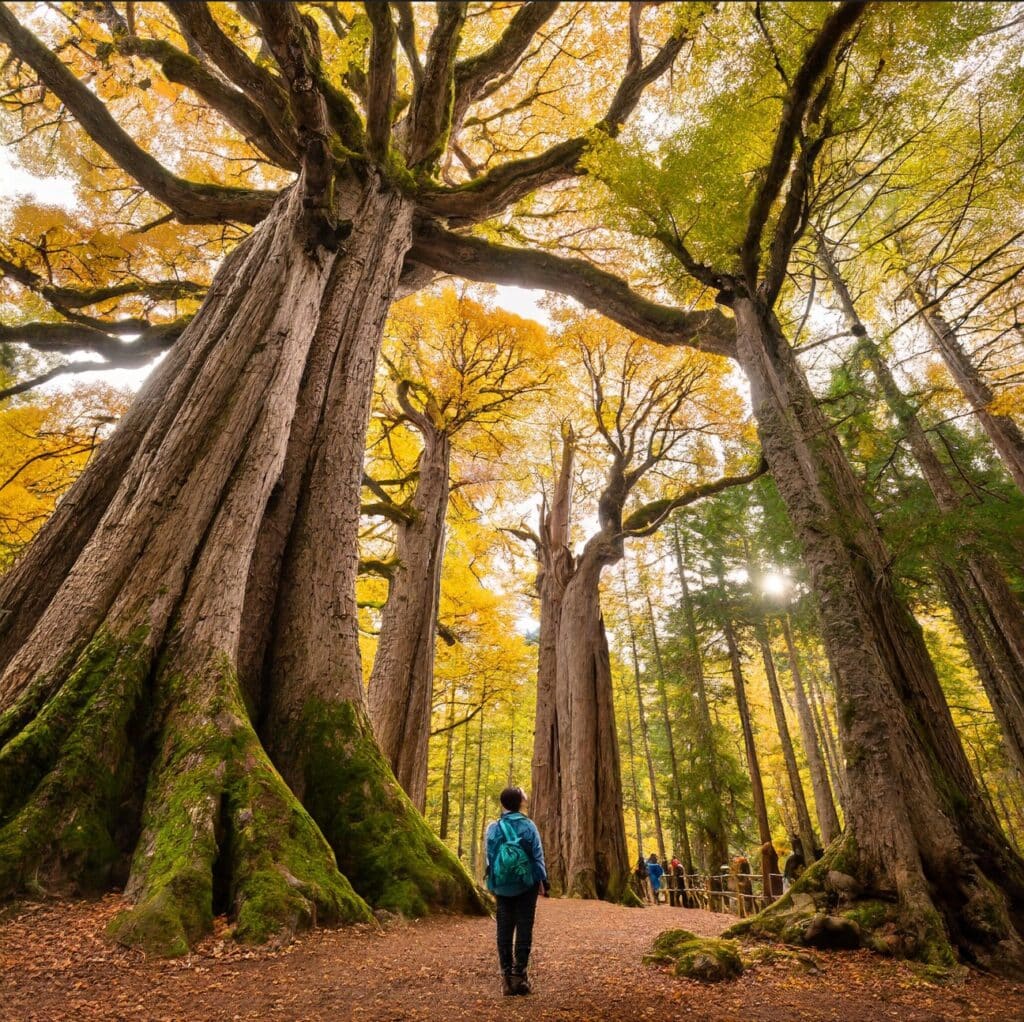
IC Inspiration
The wisdom embedded in trees preserved by The Archangel Ancient Tree Archive goes beyond our full understanding, but from what we do understand, trees are fascinating beyond what we could have imagined.
In Peter Wohlleben’s book “The Hidden Life of Trees”, he familiarizes us with the ability of trees to feel and communicate with life around them. They share signals, nutrients, and information with one another through their intricate system of roots. They have even shown that they know, in their own way, that they have families. They can feel pain and even protect one another from harm.
For example, in South Africa, acacia trees employ a fascinating communication method by releasing a “warning gas” called ethylene to alert neighboring trees of the looming threat of giraffes who are waiting to feast on their leaves. The trees that receive this warning gas through the air on time, quickly respond by releasing toxins into their leaves, making them bitter for giraffes to consume them.
The giraffe stops eating them, and those trees stay protected.
This is what allows the ancient trees to strengthen the newer species around them; they carry the resilience and wisdom required to survive for thousands of years against all odds.
Archangel has also started a Tree School which is meant to be an inspiration to the younger generation, encouraging them to reforest the planet and save it from the dangers of climate change.
Forest schools descended from Europe and can now be found in places all around the world. These schools provide education in outdoor environments like forests. The Archangel Ancient Tree Archive notes that schools like this will play a very important role in the future.
“My vision for Tree School is to have something so simple, so compelling, a major solution to reversing climate change so that all the world’s grandchildren and the ones to come, have a fair shot at being able to survive on this planet.” Notes David Milarch on the official website.
With more people coming together to preserve the natural ecosystem of this world, such as The Singhs, who restored a significant part of the Ranthambore Forest to provide a home for endangered tigers, the future of our planet Earth looks brighter than ever before!
-
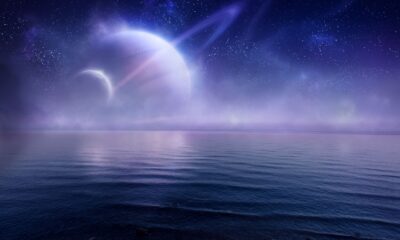
 Science2 years ago
Science2 years agoThe Largest Body of Water in the Universe is Floating in Space. Can We Use It?
-

 Technology2 years ago
Technology2 years agoThe Humane AI Pin is Here! So is Everything You Need to Know
-

 Healthcare2 years ago
Healthcare2 years ago3D Printing in Hospitals Has Saved Children’s Lives
-

 Technology2 years ago
Technology2 years agoAlef Model A Flying Car Pre-Orders Surge to a Whopping 2,850
-

 Technology2 years ago
Technology2 years agoMichelin Uptis: Airless Car Tires Emerging in 2024
-

 Sustainability2 years ago
Sustainability2 years agoTeamSeas Uses Gigantic Robot to Battle Plastic Pollution
-
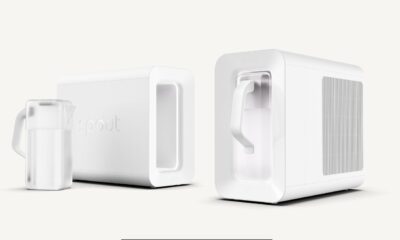
 Technology3 years ago
Technology3 years agoNew Atmospheric Water Generator Can Save Millions of Lives
-

 Sustainability2 years ago
Sustainability2 years agoArchangel Ancient Tree Archive: Cloning Ancient Trees to Build Strong Forests







